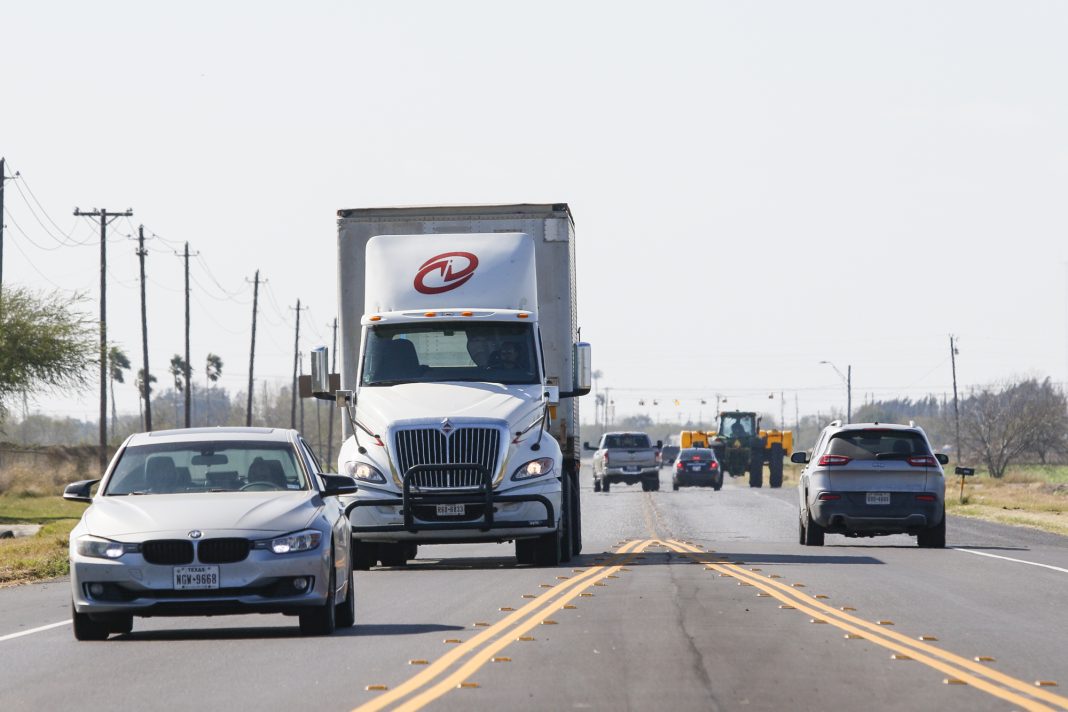|
Only have a minute? Listen instead
Getting your Trinity Audio player ready...
|
Pete Sepulveda Jr., executive director for the Cameron County Regional Mobility Authority, wants to make CCRMA’s “Fuego” vehicle toll tag, currently operable only on the S.H. 550 toll road, work on a regional, national and even international basis.
Speaking at the Better Border for a Better America Conference last week in El Paso, Sepulveda said the goal is for Fuego, which CCRMA launched almost two years ago, to be expanded to state highways, interstates and international bridges “from the interior of Mexico, the U.S.-Mexico border to the Canadian border and from Colorado to Georgia.”
Already the tag’s use is expanding, Sepulveda said, noting that soon Fuego will be “interoperable” with other state roads, and Cameron County parks and international bridges. Also, CCRMA and the Harris County Toll Road Authority signed an interlocal agreement in July to being the implementation of Fuego on all Harris County toll roads, he said.
“Once implemented, regional and international drivers will be able to travel seamlessly between Cameron County and Harris County,” Sepulveda said.
He said CCRMA and the county would welcome an invitation from the Federal Highway Administration, the Texas Transportation Institute, Customs and Border Protection, the General Services Administration (GSA), the U.S. Department of Transportation (U.S. DOT) and the Texas Department of Transportation to a meeting of the U.S.-Mexico Joint Working Committee (JWC) to pitch Fuego to Mexican federal officials.
Sepulveda also proposed that the JWC work with CCRMA and Cameron County to include data in the tag such as border-crossing wait times and information on commercial truck inspections by U.S. DOT and DPS.
Noting that “last week was a chaotic week for border trade and commerce” due to DPS motor vehicle inspections at the Eagle Pass and El Paso ports of entry that the Texas Border Coalition described as “unnecessary and burdensome,” Sepulveda said Fuego has the potential to “enhance the mobility of trade and travel at our international bridges in the Rio Grande Valley and the entire Southwest border between the United States and Mexico.”
“This would allow a collaborative effort to create safe and effective transportation for cross-border traffic,” he said.
The county previously worked with the JWC to bring about the West Rail Relocation Project, which moved a main Union Pacific rail line from downtown Brownsville and Matamoros nearly four miles west to a rural area, Sepulveda said.
He highlighted other CCRMA projects, including the S.H. 550 Gap 2, which would complete the S.H. 550 project that will eventually be federally designated and signed “Interstate 169.” Sepulveda said the new 10 miles of interstate will boost economic development by creating vehicle access to a previously undeveloped area and directly linking the Port of Brownsville and the interstate.
He also discussed Brownsville’s East Loop Project, which, when complete, will create the East Loop Overweight Corridor for commercial trucks traveling from Mexico and the Veterans International Bridge at Los Tomates to the port, reducing congestion on I-69E and S.H. 48.
Sepulveda likewise highlighted an expansion project underway at Veterans Bridge aimed at decreasing wait times for passenger vehicles by adding four new lanes, as well as a planned total reconstruction of Gateway International Bridge in Brownsville that will include expanded vehicle and pedestrian capacity. GSA is investing $200 million toward that project, he said.
The money is part of $3.4 billion in Bipartisan Infrastructure Law funds awarded by the GSA for improvements at 26 ports of entry around the United States.
“These improvements will improve traffic flow and pedestrian safety, all while accommodating the region’s growing population and South Texas’ cross-border travelers,” Sepulveda said.





